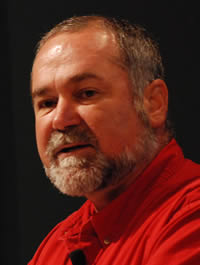
I'm a talented nobody. I don't even have an associates degree. And it's been my experience that some of the the most educated people tend to underestimate the importance of educating the general public.
Professionals tend to see the public as people to be managed by professionals. They see them as people who are sick, and themselves as doctors dispensing medicine.
The public doesn't have time to read all the books. They need things condensed. They have bright minds that are sponges for wisdom, but the wisdom never reaches them. A lengthy booklist won't help them, no matter how many good books are on the list. It's a tough problem, but I have one solution.
Wisdom quotes.
Can you ask all the people you know, who are copacetic with Collective Wisdom and Open Source, to collect their favorite wisdom quotes from the books they've read? Then you can post them to phi beta iota. That's almost an archaic method compared to open source technology, but it's a reliable and kitchen-tested recipe!
Wisdom quotes are like data visualization. They condense complex perspectives into readily graspable concepts.
One of my favorites, at the moment, is: In a room full of intelligent people, the smartest person in the room is the room.
Verbosity is the enemy of spreading the word about anything. Verbosity slows the information cycle—-Open Source Everything included. Someone needs to collect wisdom quotes from your field to condense all the main ideas.
The great unwashed masses are far smarter than most people realize. They're just lacking in important feedback! Wisdom quotes, widely circulated, accelerate the flow of information.






